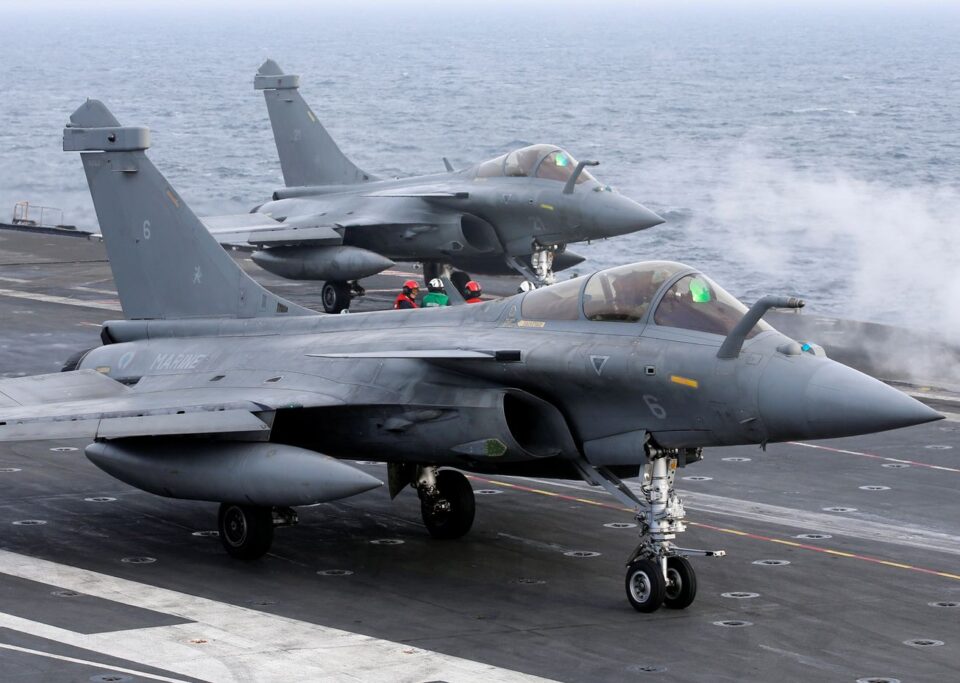Aerospace
IAF to acquire 114 fighter jets for Rs 1.5 lakh crore, 96 of them to be made in India

The Indian Air Force’s current acquisition plan is reaching critical decisions. The Indian Air Force plans to purchase 114 fighter jets, 96 of which will be constructed in India and the remaining 18 would be acquired from a foreign vendor.
Most aircraft manufacturers will not commit to build a few aircraft in any country. However, as Dassault previously stated, they will plan to build in India if they receive a minimum of 100 aircraft. Other manufacturers may follow a similar investment and technology transformation plan.
The Indian Air Force intends to purchase 114 Multirole Fighter Aircraft (MRFA) under the ‘Buy Global, Make in India’ scheme, which allows Indian firms to collaborate with foreign firms.
According to the plan, once the initial 18 aircraft are imported, the next 36 aircraft will be constructed in the nation, with payments made in both foreign and Indian currencies, according to the sources.
According to the sources, the Indian partner would be responsible for the final 60 aircraft, and the government would only make payments in Indian currency.
The payment in Indian currency will aid the suppliers in achieving the project’s above 60% “Make-in-India” content, according to the sources.
Boeing, Lockheed Martin, Saab, MiG, Irkut Corporation, and Dassault Aviation are among the global aircraft manufacturers likely to participate in the tender.
For the Indian Air Force to preserve its advantage over neighbouring adversaries Pakistan and China, these 114 fighter jets are essential.
The 36 Rafale aircraft purchased under emergency orders aided much in retaining an advantage over the Chinese throughout the Ladakh crisis that began in 2020, but the numbers are insufficient, and more such capabilities will be necessary.
The force has already placed orders for 83 LCA Mk 1A planes, but it still needs more capable planes because a substantial number of MiG series jets have been phased out or are nearing the end of their useful lives.
The fifth-generation Advanced Medium Combat Aircraft project is progressing satisfactorily, but it will take a long time before it can be put into service.
The total cost of the agreement is expected to be approximately Rs 1.5 lakh crore. The Indian Air Force is considering purchasing these Multirole Fighter Aircraft under the Buy India, Make in India initiative. Indian enterprises will be able to work with a foreign vendor to build these planes under this system. Boeing, Lockheed Martin, Saab MIG Irkut Corporation, and Dassault Aviation are among the global aircraft manufacturers anticipated to participate in the tender process.

Aerospace
Boeing Transfers Rocket Stage to NASA, Paving Way for Human Moon Mission

Boeing has achieved a significant milestone by providing NASA with the second core stage of the Space Launch System (SLS) rocket.
This crucial component, crafted at NASA’s Michoud Assembly Facility (MAF), is set to propel the Artemis II crew into lunar orbit, marking humanity’s return to deep space after a 50-year hiatus.
The monumental Boeing-built rocket stage, the largest element of the Artemis II mission, will embark on a journey aboard the Pegasus barge, traveling 900 miles to NASA’s Kennedy Space Center.
Comparison of two legendary aircraft B777x vs B747 aircraft:Click here
Upon arrival, it will be meticulously integrated with other essential Artemis II components, including the upper stage, solid rocket boosters, and NASA’s Orion spacecraft within the iconic Vehicle Assembly Building. This intricate integration process is a vital step toward the eagerly anticipated Artemis II launch, slated for 2025.
“Boeing-built products helped land humankind on the moon in 1969, and we’re proud to continue that legacy through the Artemis generation,” remarked Dave Dutcher, vice president and program manager for Boeing’s SLS program. “Together, with NASA and our industry partners and suppliers, we are building the world’s most capable rocket and paving the way to deep space through America’s rocket factory in New Orleans.”
NASA, Lockheed Martin Reveal X-59 Quiet Supersonic Aircraft:Click here
The delivery of Core Stage 2 marks a significant achievement in the evolution of the SLS rocket. Towering over 200 feet and powered by four RS-25 engines, this core stage, coupled with two solid-fueled booster rockets, will generate a staggering 8.8 million pounds of thrust. This immense power is crucial to launching Artemis II and future missions into the vast expanse of space.
The SLS rocket stands unparalleled in its capability to transport both crew and substantial cargo to the moon and beyond in a single launch. Its extraordinary capacity will facilitate the delivery of human-rated spacecraft, habitats, and scientific missions to destinations including the moon and Mars, ushering in a new era of space exploration.
-

 Travel1 week ago
Travel1 week agoAir India to Expand US Operations with Three New Routes After a Decade
-

 Travel2 weeks ago
Travel2 weeks agoWhy We Should Avoid These Stamps in a Passport
-

 Airlines1 month ago
Airlines1 month agoInvestigations Reveal Fake Chinese Titanium in Boeing and Airbus Jets
-

 Tech4 weeks ago
Tech4 weeks agoChina’s CATL Plans 1,800-Mile Electric Plane Launch by 2027
-

 Airport3 days ago
Airport3 days agoTop 10 Largest Airports in the World by Size
-

 Aerospace4 weeks ago
Aerospace4 weeks agoChina’s Fighter Jets Turn Wings into Autonomous Drones
-

 Airlines4 days ago
Airlines4 days agoAir India Rolls Out A350s for Delhi-New York JFK and Newark Routes
-

 Defence3 weeks ago
Defence3 weeks agoBoeing Enhances Chinook with New Engines and Block II Upgrades at $96 Million







